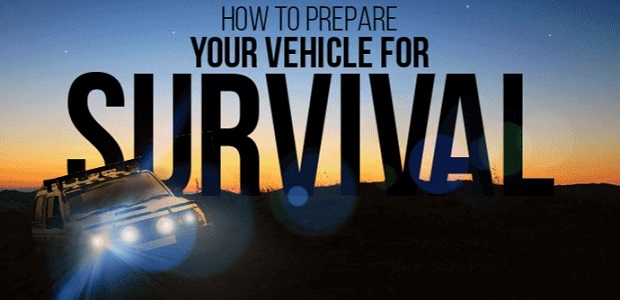In any bug out situation your life will depend on the vehicle you choose, as well as how you took care of it, and prepared it for the journey.
So it only makes sense to pay close attention to your bug out vehicle, and to learn as much as you can on how to keep it in best functioning condition, depending on the disaster you might be facing, the location you would be heading to and the route you take to get there.
We wrote about the top 10 vehicles for your EMP survival and the top 10 bug out vehicles. We also found this cool infographic from Toolorders that packs a lot on information on this topic.
So take a look and make sure to let us know what’s your bug out vehicle of choice, in the comments section below!

Interested in learning more on EMP survival? CLICK HERE to find out more!










































































Use a rope or string to help find your way back to your vehicle?
Ummmm…I doubt that most people will have more than 100 feet of rope or string, maybe 100 yards at the most. If they get that far away from their vehicle and can’t find their way back, then they might as well give up on trying to survive.
No one is going to have enough rope or string to help them find their way back from the distances that an average person would lose track of their vehicle.
And unless it’s a really big, heavy rope (which would be too big to be practical) most ropes are inadequate for pulling out most vehicles that get stuck. And most ropes don’t give (stretch) enough to be ideal for pulling out a stuck vehicle. Without being able to stretch, it increases the chance that the rope will break or cause damage.
You’re much better off buying a 2 inch wide snatch strap, which has eyes on the end for attaching to things, and has enough stretch in it to prevent damage. Buy a couple of clevises so that you’ll have more attachment options. I keep a 2 inch wide, 20 foot long snatch strap in each vehicle, as well as clevises.
I’ve been off roading for well over 30 years. I’ve been stuck and have been pulled out. And I’ve pulled out people that were stuck. I know not to use a rope. It’s well worth investing money in the correct equipment.
Much of what you wrote here makes sense, but I miss the point about off-road 4-wheel drive cars with a lift. Where are you going that you need a car like that? Assume for the sake of the argument that you get out of town and you mapped your alternate routes and you’re on your way. Are you planning to drive across someone’s pasture? Tear his fence down in your escape? Prepare to get shot, especially in the early days of SHTF. Property rights still mean something.
Are you planning to escape to a national forest/park/whatever? Good luck with that for reasons that have nothing to do with your vehicle. But national forests/parks all have roads that accommodate normal vehicles. People drive through them all the time. In the later days of SHTF, you have no gas, just like the rest of us. In the early days of SHTF, the secondary and tertiary roads will be passable, and in the later days of SHTF, assuming you have gas, your problem will be hostiles camped on the side of the road.
It makes sense to have a vehicle big enough to pull a trailer or camper, big enough for your family, etc., but the roads don’t magically collapse when society does.
Interesting article. Once I saw the vehicle type and Ray Mears listed at the bottom of the infographic I understood this applies mostly to desert travel by Range Rover or similar off road vehicle, but the information is still applicable under other conditions and even with everyday vehicles or whatever most of us commute with.
I currently drive a Toyota Matrix and have considered or wondered if it would be possible to apply some of the same modifications as done to trucks or jeeps such as installing racks for tires and jerry cans as these items would use most of the available space a smaller car has to offer.
In regards to some of non-vehicular related items, the owner/driver and even the passengers should pack supplies to build shelters, rope, ribbon, tape or some kind of markers, flashlights, some type of beacon or blinking light, and whatever they might need. Why do I say this, well if I have a ton of supplies to keep my car rolling, to improvise shelter, a toilet, extra fuel, maps, etc., it’ll take some effort to pack and fit it all in the car. And due to the heat (Cars are like ovens) or cold, the supplies have to be checked and rotated or replaced. Thus if people have individual kits, that should ensure everyone has clothing, hygiene supplies, and personal items that would be a burden for one person to provide for whoever they may ride with.